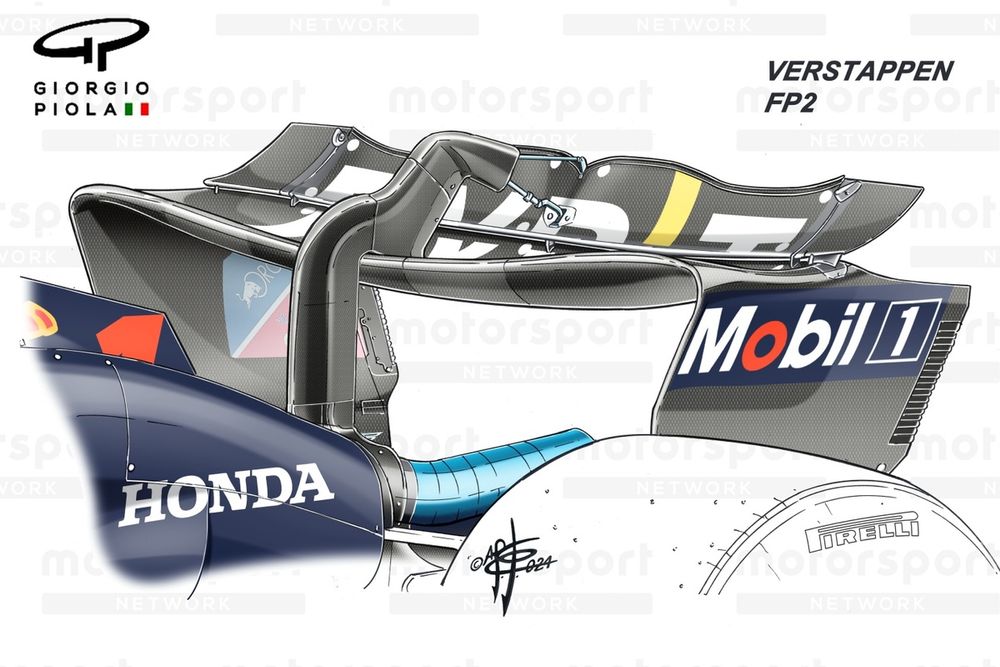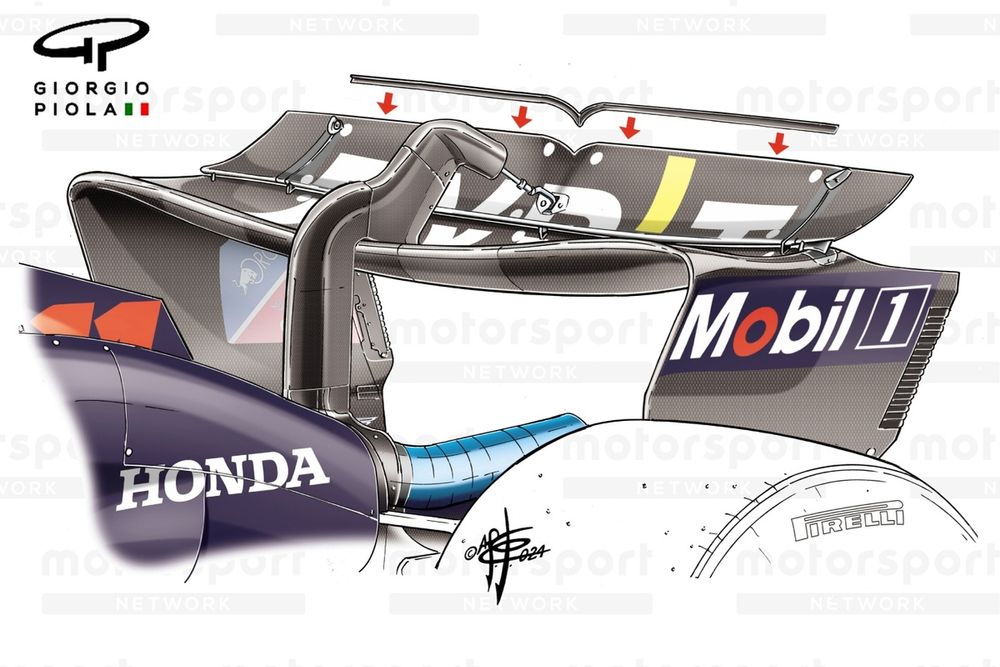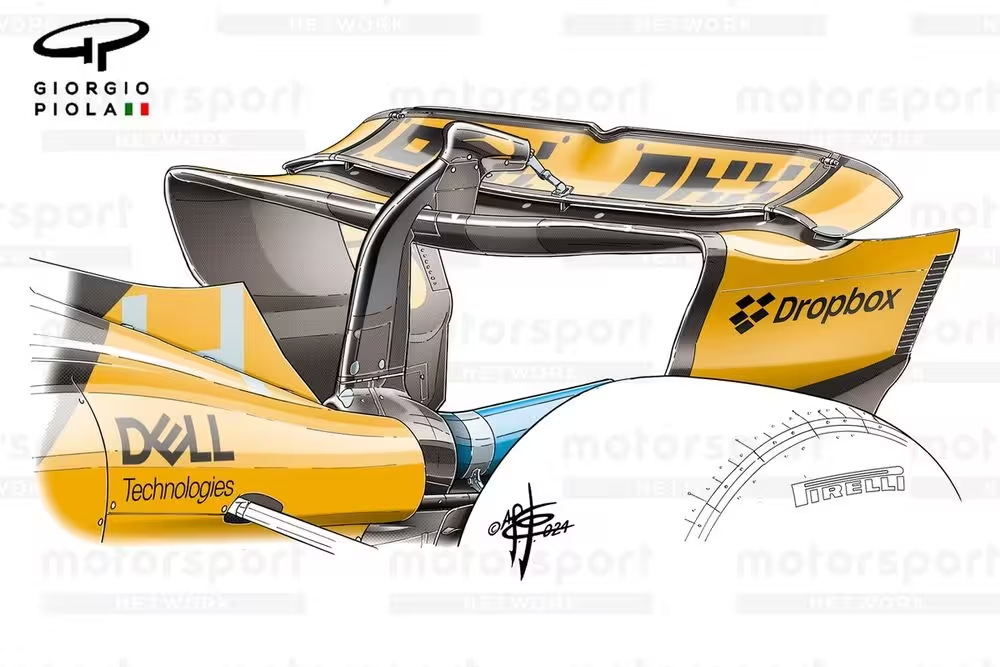While Spa-Francorchamps has a demanding middle sector, its long straights mean Formula 1 teams need to bring low-downforce solutions.
However, getting the right balance of downforce and drag is more complicated with the current generation of cars, with teams needing to weigh up the impact of beam wing and main plane configurations.
Throw into the mix too the unpredictable weather that is a hallmark of the Belgian Grand Prix weekend, and it ensures plenty of headaches for engineers in finding the best approach.
Ferrari brought a new rear wing specification to Spa that took a trip down memory lane. The mainplane and upper flap are similar to the ones used last season, with much less of the available box region allowed within the regulations used.
The biggest change from last season is the switch in tip section layout, as it has incorporated the semi-detached layout used on its other wings this season (top inset), rather than the top mounted and rolled over solution used last season (bottom inset).
This alteration coincides with a change in overall shape for the tip section, which is now flattened-out by comparison, whilst the endplate cutout and mainplane have also been optimised to improve flow conditions.
A semi-circular notch is also present in the central section of the upper flap (red arrow), just as it was with the wing used in 2023.
The trailing-edge notch isn’t a new feature in F1, although there’s traditionally more of a case for a V-shaped solution, with multiple teams even using them during this current rules era.
McLaren MCL38 rear wing
Photo by: Giorgio Piola
McLaren’s latest low-downforce variant includes one of these V-shaped notches to match the shorter chord upper flap in use. This replaces the semi-circular type used with some of its other wing specifications.
There was also a new semi-detached tip section design employed too, with the section rolled over in order that it works harmoniously with the squarer mainplane and endplate radius. The cutout thereafter has also been optimised.

Red Bull Racing RB20 rear wing detail, Belgian GP
Photo by: Giorgio Piola

Red Bull Racing RB20 rear wing, Belgian GP
Photo by: Giorgio Piola
There were no new rear wing specifications available for Red Bull in Belgium, but that didn’t stop the team from trying out a number of different solutions in an effort to find the right balance for its drivers.
The most interesting of these was mounted on Max…
Click Here to Read the Full Original Article at Autosport.com – Formula 1 – Stories…

